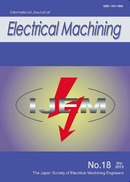Volume 26
Displaying 1-9 of 9 articles from this issue
- |<
- <
- 1
- >
- >|
Review
-
Article type: Review
2021Volume 26 Pages 1-
Published: 2021
Released on J-STAGE: November 01, 2021
Download PDF (3919K)
Paper
-
Article type: Paper
2021Volume 26 Pages 9-
Published: 2021
Released on J-STAGE: November 01, 2021
Download PDF (708K) -
Article type: Paper
2021Volume 26 Pages 16-
Published: 2021
Released on J-STAGE: November 01, 2021
Download PDF (2052K) -
Article type: Paper
2021Volume 26 Pages 25-
Published: 2021
Released on J-STAGE: November 01, 2021
Download PDF (2021K) -
Article type: Paper
2021Volume 26 Pages 33-
Published: 2021
Released on J-STAGE: November 01, 2021
Download PDF (1606K) -
Article type: Paper
2021Volume 26 Pages 40-
Published: 2021
Released on J-STAGE: November 01, 2021
Download PDF (1698K) -
Article type: Paper
2021Volume 26 Pages 46-
Published: 2021
Released on J-STAGE: November 01, 2021
Download PDF (795K) -
Article type: Paper
2021Volume 26 Pages 54-
Published: 2021
Released on J-STAGE: November 01, 2021
Download PDF (1920K) -
Article type: Paper
2021Volume 26 Pages 60-
Published: 2021
Released on J-STAGE: November 01, 2021
Download PDF (830K)
- |<
- <
- 1
- >
- >|
